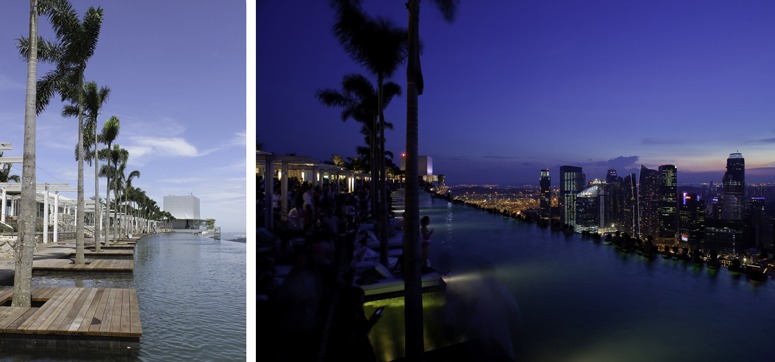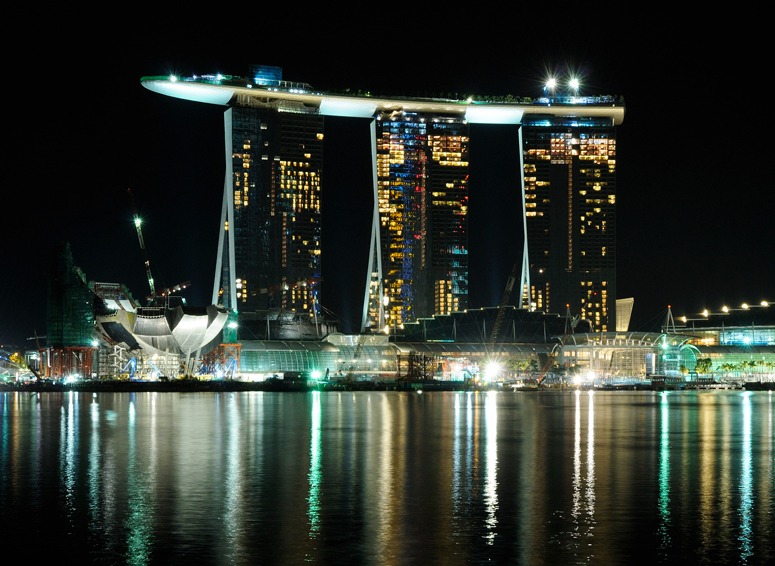Ebenezer Howard proposed garden cities outside London. That’s fine but Central London should adopt the landscape policy of becoming a Roof Garden City. Property developers should be rewarded for providing green roof gardens and punished on those few occasions when they find reasons for not providing roof gardens and sustainable green roofs on new buildings. Visually, this is the single most important policy for making London a Green Roof City. As everyone knows, London is already the world’s Garden Capital. Now it should become the world’s Roof Garden Capital.
But I doubt if it will. British town planners are far too unimaginative – and Singapore’s planners are way out in front. As I ride my bike around London I often think ‘Why does the RTPI exist? What, in heaven’s name, do town planners DO? Why not dissolve the Royal Town Planning Institute?’ The answer, I think, is that most of their effort goes into a sometimes-useful attempt to stop landowners doing what they want to do. UK planners seem to have no positive achievements – except, perhaps, in helping developers evade planning restrictions dreamed up by their professional colleagues.
Thomas Mawson published an attractive book on Civic Art in 1911 and became a founder member of what is now the Royal Town Planning Institute in 1914. Then, in 1929, he became first president of what is now the Landscape Institute. Perhaps we need an agreed division of labour between the two professional institutes: the RTPI can stop developers from doing bad things and the Landscape Institute can encourage them to do good things.
Monthly Archives: March 2014
Roof SkyPark garden-landscape on Marina Bay Sands Hotel in Singapore
Having proposed a Sky Park for the City of London, I was delighted to see a real Skypark on the Marina Bay Sands Hotel. ‘London talks and Singapore acts’. The Marina Bay Sands Hotel has 2,561 rooms and 55 floors. The SkyPark, 200m above ground level, is larger than three football pitches and has an observation deck, 250 trees and a 150m infinity swimming pool. It is a brilliant project by Las Vegas Sands and, I hope, a signpost to the future of urban form. See the Marina Bay Sands website for more details. I’d like to spend a few nights there, congratulating the hotel management for commissioning the project and then the city of Singpore for its policy of moving from ‘Garden City to Model Green City‘. But a design critic must also provide criticism:
- the garden/landscape design looks ‘OK but dull’. The designers have not risen to the challenge of such a fabulous opportunity, perhaps to re-create some of the rain forest of pre-colonial Singapore with stylised beaches running to the perimeter pool. I wouldn’t even object to a glowing Tarzan by Jeff Koons in the heart of the jungle – and nor would the kids of the guests.
- As built, SkyPark floats somewhere between the deck of a luxury cruise ship and the garden of a luxury hotel – and both are design categories which landscape designers neglect. What the SkyPark needed was a serious dreamland design to lift the imagination of guests, as well as the contents of their wallets. Moshe Safdie was the architect. He worked with five artists but, having written a book For everyone a garden probably sees himself as an expert on garden design. I do not doubt that, like Frank Lloyd Wright, Safdie has the ability to design gardens but as with all the arts, it takes time to develop expertise and one needs to love garden life and garden visiting to succeed. My belief is that Edwin Lutyens’ best gardens were designed in co-operation with Gertrude Jekyll and that Lutyens tended towards vacant formalism when working, like Safdie, on his own. Eero Saarinen had the great good sense to work with Dan Kiley.
- the Tropical Island shape of the SkyPark sits unhappily on its three towers. There is a dash of HG Wells’ War of the Worlds about it. Or an out-or-water oil rig. Looking up, one wonders if a Tsunami left a cruiseliner or a surfboard perched on the roofs of its three towers. The resort hotel may appear more sensitive to its context when more of Singapore’s buildings have SkyParks
- Safdie’s urban design, which I commend but which is not apparent from the photographs, was as follows: ‘A series of layered gardens provide ample green space throughout Marina Bay Sands, extending the tropical garden landscape from Marina City Park towards the Bayfront. The landscape network reinforces urban connections with the resort’s surroundings and every level of the district has green space that is accessible to the public. Generous pedestrian streets open to tropical plantings and water views. Half of the roofs of the hotel, convention center, shopping mall, and casino complex are planted with trees and gardens.
Top photographs courtesy Marina Bay Sands Hotel. Bottom photo courtesy Peter Morgan.


